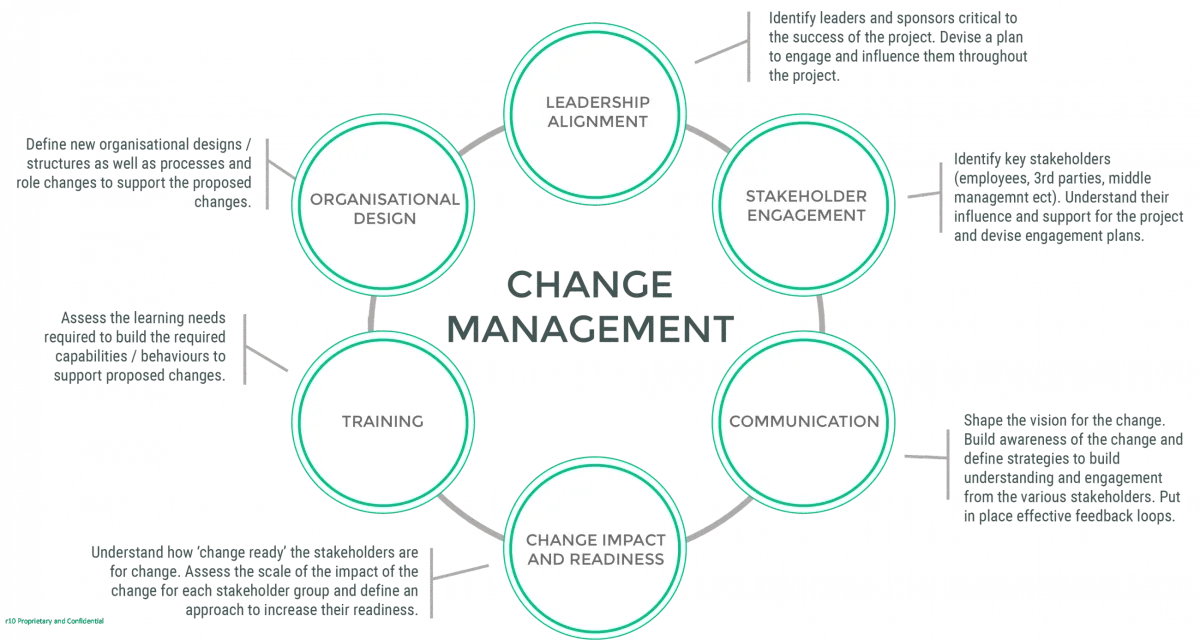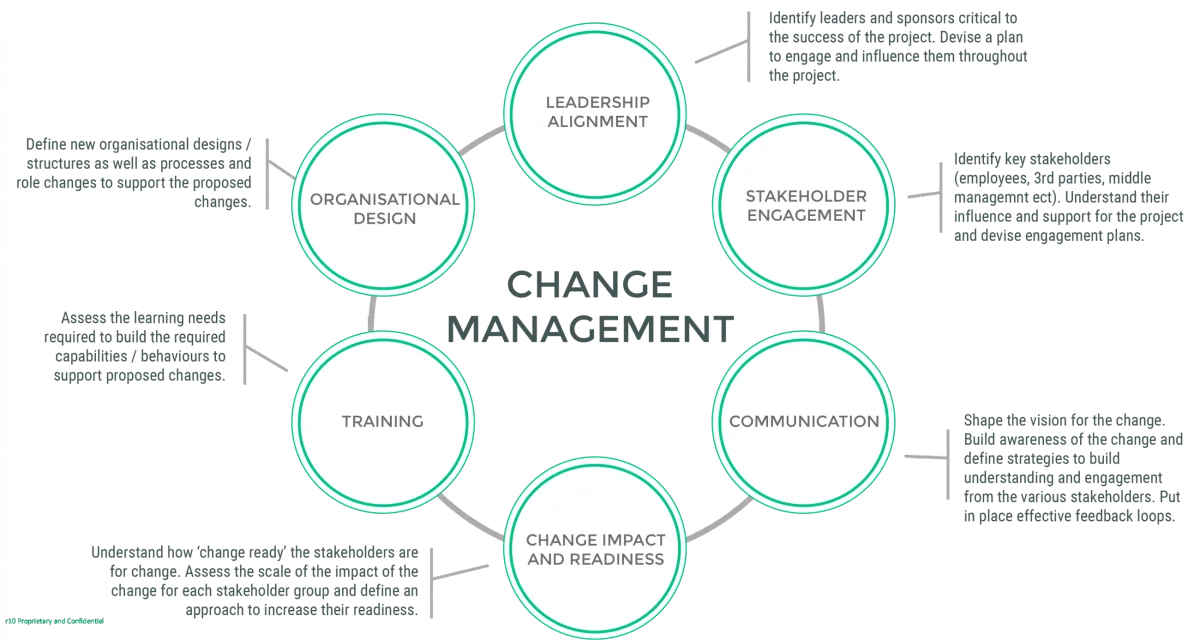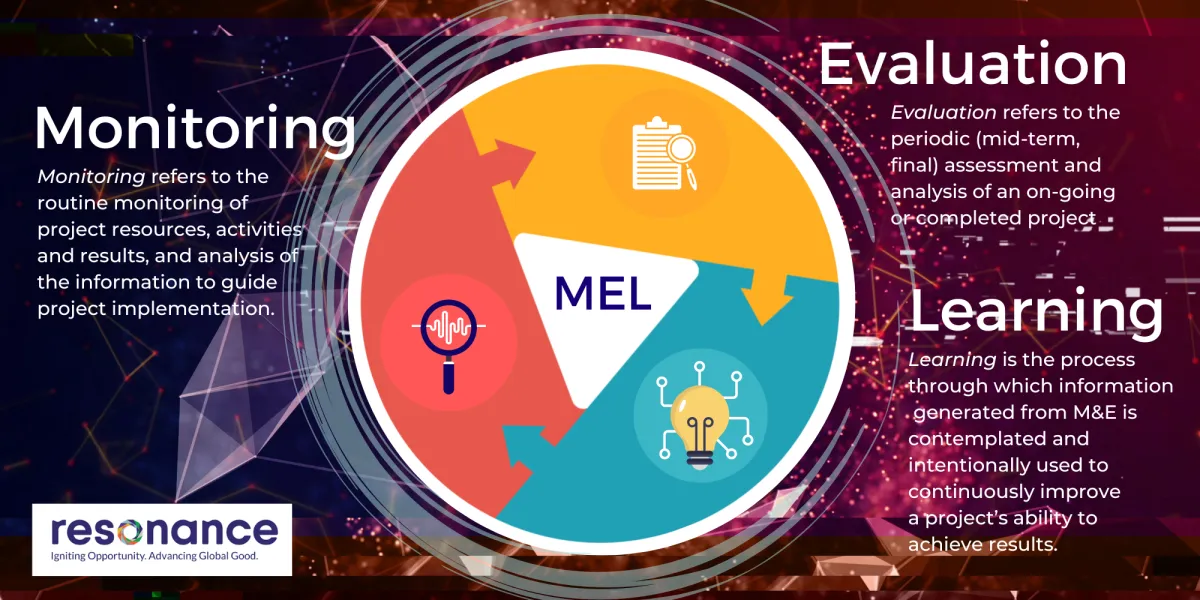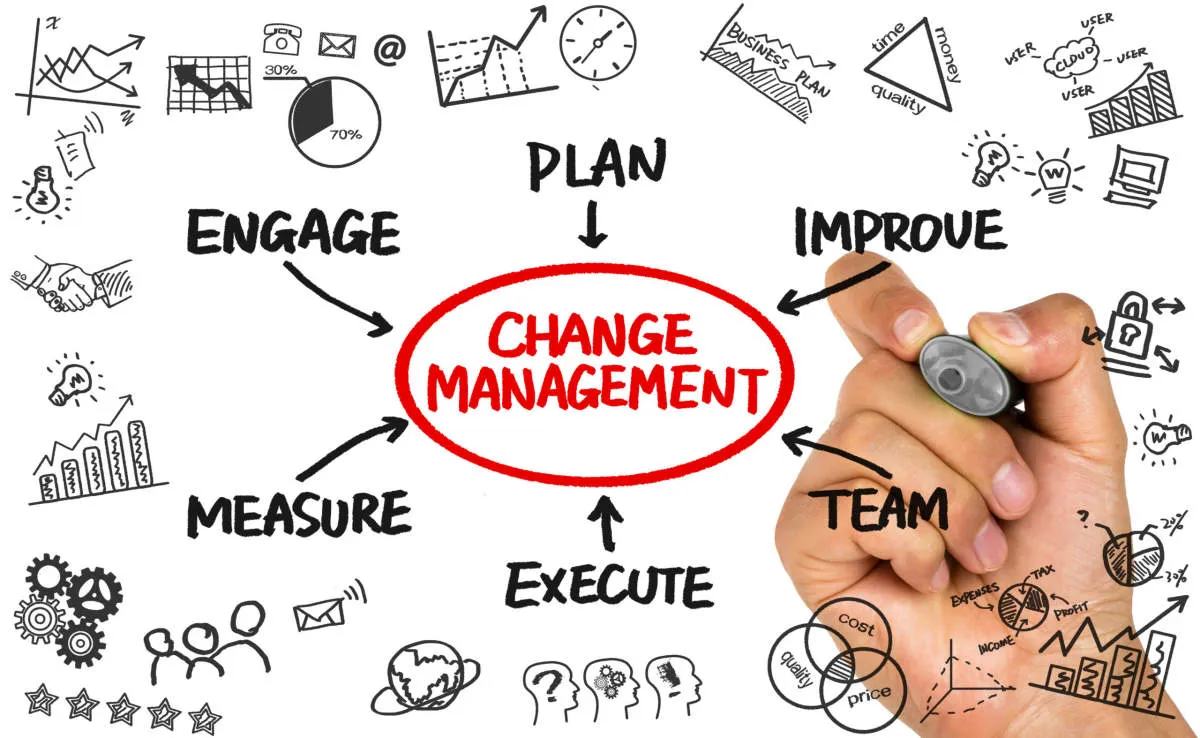In the dynamic business landscape, mastering effective change management is crucial for business leaders to drive success and growth. This article explores key strategies that leaders can implement to navigate organizational changes successfully.
Understanding Change Management

Change management is a structured approach that helps individuals, teams, and organizations transition from their current state to a desired future state. It involves planning, implementing, and managing change initiatives to minimize resistance, mitigate risks, and achieve successful outcomes.
At its core, change management recognizes that change impacts people, processes, and technology. It emphasizes the human side of change, addressing the emotional and psychological impacts on individuals undergoing transitions.
Key aspects of change management include:
- Defining the change: Clearly articulating the need, goals, and scope of the change.
- Planning and communication: Developing a comprehensive plan outlining the steps, timelines, resources, and communication strategies.
- Stakeholder engagement: Identifying and engaging stakeholders, addressing their concerns, and building buy-in.
- Resistance management: Proactively identifying and addressing potential resistance to change.
- Training and support: Providing necessary training and support to equip individuals with the skills and knowledge needed for the new way of working.
- Monitoring and evaluation: Tracking progress, measuring impact, and making adjustments as necessary.
Creating a Change Management Plan

A robust change management plan is the roadmap to successfully navigating organizational transitions. This plan outlines the why, what, how, who, and when of the change process. Here’s a breakdown of the key elements:
1. Define the Change and Its Objectives:
Begin by clearly articulating the specific change you are undertaking. What are the desired outcomes? How will success be measured? Clearly defining the change and its objectives ensures everyone understands the ultimate goal and the benefits it brings.
2. Stakeholder Analysis:
Identify all individuals and groups impacted by the change. This may include employees, managers, customers, suppliers, or even the community. Analyze their potential reactions, concerns, and levels of influence. Understanding your stakeholders allows you to tailor communication and support strategies effectively.
3. Communication Strategy:
Develop a comprehensive communication plan that outlines what information will be shared, when, how, and with whom. Transparency and consistency are key to building trust and minimizing resistance. Use a variety of channels to reach different stakeholder groups, including emails, meetings, presentations, and online platforms.
4. Implementation Plan:
Break down the change process into manageable phases, each with specific tasks, timelines, and responsible parties. This detailed roadmap ensures the change is implemented systematically and efficiently. Regularly track progress against the plan and make adjustments as needed.
5. Training and Support:
Provide employees with the necessary training, resources, and support to adapt to the change. This may include new skills development, technical guidance, or emotional support to address anxieties and concerns.
6. Resistance Management:
Anticipate and address resistance to change. Identify potential barriers and develop strategies to mitigate them. Engage resistant individuals or groups early on, listen to their concerns, and address them constructively. Providing clear and honest information while acknowledging their feelings can help alleviate resistance.
7. Monitoring and Evaluation:
Establish clear metrics and methods to track the progress of the change initiative. Regularly assess the effectiveness of your change management plan and make adjustments as needed based on feedback, data analysis, and lessons learned. This iterative approach ensures continuous improvement and a higher likelihood of success.
Communicating Change to Your Team

Effective change management hinges on clear, consistent, and empathetic communication. When leading your team through transitions, the way you communicate is just as crucial as the change itself. Here’s how to approach communication effectively:
1. Be Transparent and Timely:
Don’t let rumors and speculation fill the void. Communicate the upcoming changes to your team as early as possible. Be transparent about the reasons behind the change, the potential impacts (both positive and negative), and the timeline for implementation.
2. Clearly Articulate the “Why”:
People are more receptive to change when they understand the rationale behind it. Connect the dots for your team. Explain how the change aligns with broader business goals, addresses challenges, or seizes opportunities.
3. Active Listening and Two-Way Communication:
Communication shouldn’t be one-sided. Encourage your team to ask questions, express concerns, and share their perspectives. Actively listen to their feedback and demonstrate that you value their input. This fosters trust and buy-in.
4. Address Concerns Empathetically:
Change can be unsettling. Acknowledge the emotions your team might be experiencing, such as fear, uncertainty, or resistance. Respond to their concerns with empathy and understanding, providing support and resources to help them navigate the transition.
5. Choose the Right Channels:
Utilize a mix of communication channels to ensure your message reaches everyone effectively. This could include team meetings, emails, intranet posts, Q&A sessions, or even one-on-one discussions. Tailor your approach based on the type and scale of the change.
6. Reinforce and Repeat:
Don’t expect everyone to absorb information immediately. Reinforce key messages consistently through various channels. Repetition helps solidify understanding and demonstrates your commitment to transparency.
Managing Resistance to Change

Resistance to change is a natural human reaction, and it’s something that business leaders need to anticipate and address proactively. Whether the change involves new technology, a shift in company culture, or a restructuring of teams, some employees will inevitably resist. Here’s how to effectively manage resistance:
1. Communication is Key
Clearly communicate the reasons behind the change, the benefits it will bring, and how it will impact employees. Transparency and open dialogue can go a long way in mitigating fear and uncertainty.
2. Active Listening and Empathy
Encourage employees to express their concerns and suggestions. Listen empathetically to understand their perspectives. Addressing concerns head-on and showing that you value their input can lessen resistance.
3. Involve Employees in the Process
Wherever possible, involve employees in the change process. This could mean seeking their input on implementation plans or giving them a role in decision-making. Participation fosters ownership and reduces feelings of being controlled.
4. Provide Adequate Training and Support
Ensure employees have the skills and resources they need to adapt to the change. Offer comprehensive training programs and ongoing support to help them navigate the transition smoothly.
5. Address Resistance Directly
For employees who remain resistant, address their concerns individually. Explain the rationale behind the change and the potential consequences of not adapting. In some cases, it may be necessary to set clear expectations and consequences for non-compliance.
Implementing Change Effectively

The implementation phase is where the rubber meets the road in change management. It’s where carefully crafted plans translate into real-world action. To ensure a smooth and successful implementation, consider the following:
Clear Communication is Key
Maintain open and transparent communication throughout the process. Regularly update stakeholders on progress, address concerns promptly, and celebrate successes along the way. Utilize diverse communication channels to cater to different preferences and ensure the message reaches everyone.
Empowerment and Ownership
Give employees the tools, resources, and autonomy they need to embrace and adapt to the changes. Encourage ownership by involving them in problem-solving and decision-making processes related to the implementation.
Flexibility and Adaptability
Acknowledge that unforeseen challenges may arise during implementation. Remain flexible and be prepared to adapt your plans as needed. Encourage a culture of learning and continuous improvement, viewing setbacks as opportunities for growth.
Reinforce and Celebrate Success
Recognize and celebrate milestones achieved throughout the implementation process. Publicly acknowledge and appreciate the efforts and contributions of individuals and teams. This fosters a positive environment and reinforces the value of the change.
Monitoring and Evaluating Change

Effective change management doesn’t end with implementation. Monitoring and evaluating the change process is crucial to ensure its success and make any necessary adjustments along the way. This involves:
Key Performance Indicators (KPIs)
Establish clear and measurable KPIs to track the progress of the change initiative. These KPIs should be aligned with the overall objectives of the change and should be regularly monitored and reported on.
Data Collection and Analysis
Gather relevant data from various sources to assess the impact of the change. This might include employee surveys, performance metrics, customer feedback, and financial data. Analyze the data to identify trends, successes, and areas for improvement.
Communication and Feedback
Maintain open communication channels throughout the monitoring and evaluation process. Regularly communicate progress, challenges, and lessons learned to stakeholders. Encourage feedback from employees and incorporate it into ongoing adjustments.
Corrective Actions
Be prepared to make corrective actions based on the data and feedback collected. This may involve refining processes, providing additional training or support, or adjusting communication strategies.
Continuous Improvement
View monitoring and evaluation as a continuous improvement process. Use the insights gained to refine future change initiatives and create a more adaptable and responsive organization.
Conclusion
In conclusion, implementing clear communication, involving stakeholders, and providing adequate support are key strategies for successful change management in business leadership.

